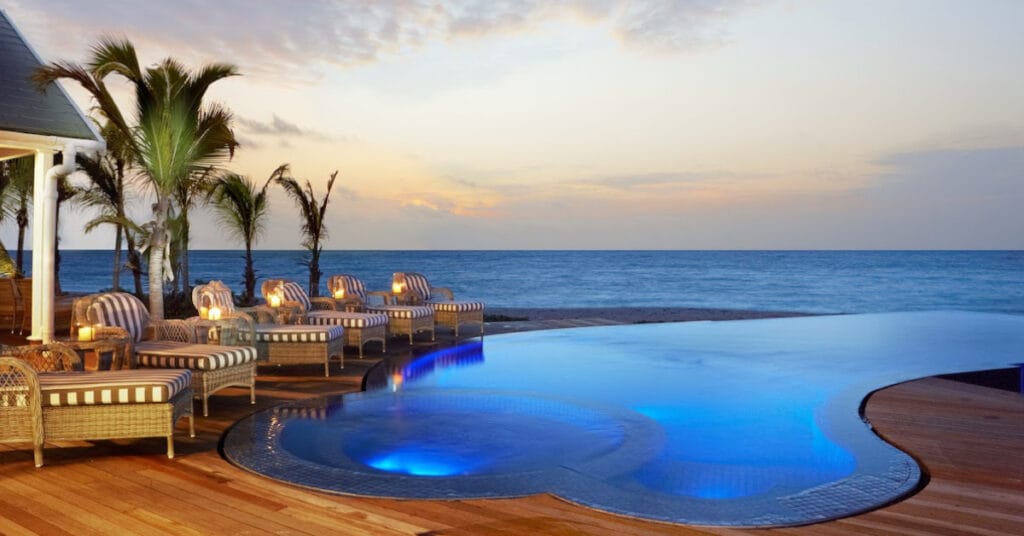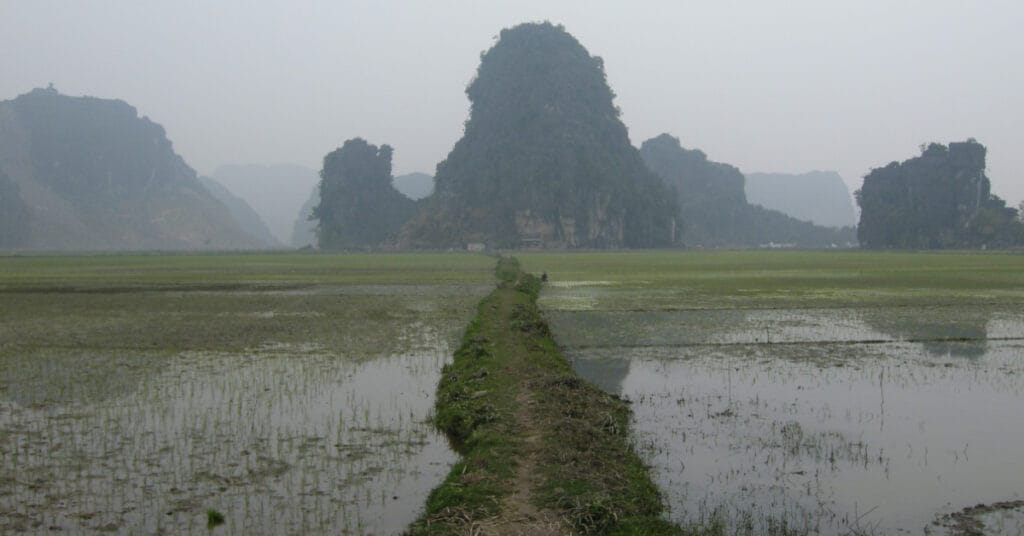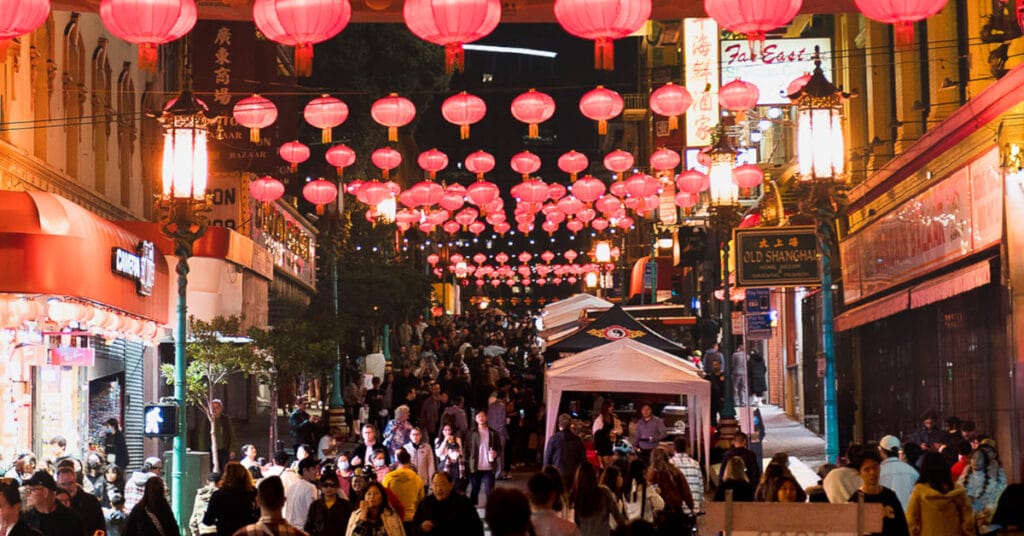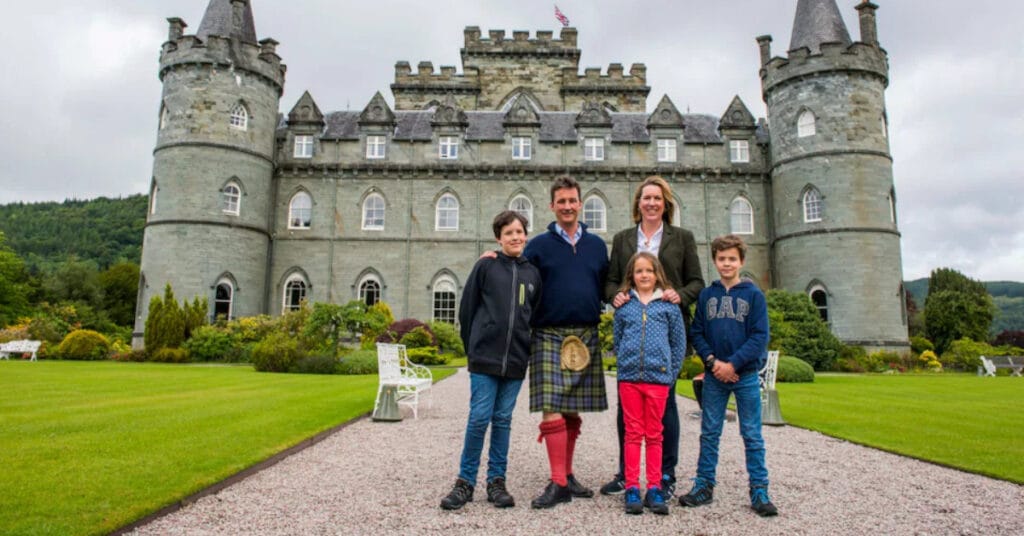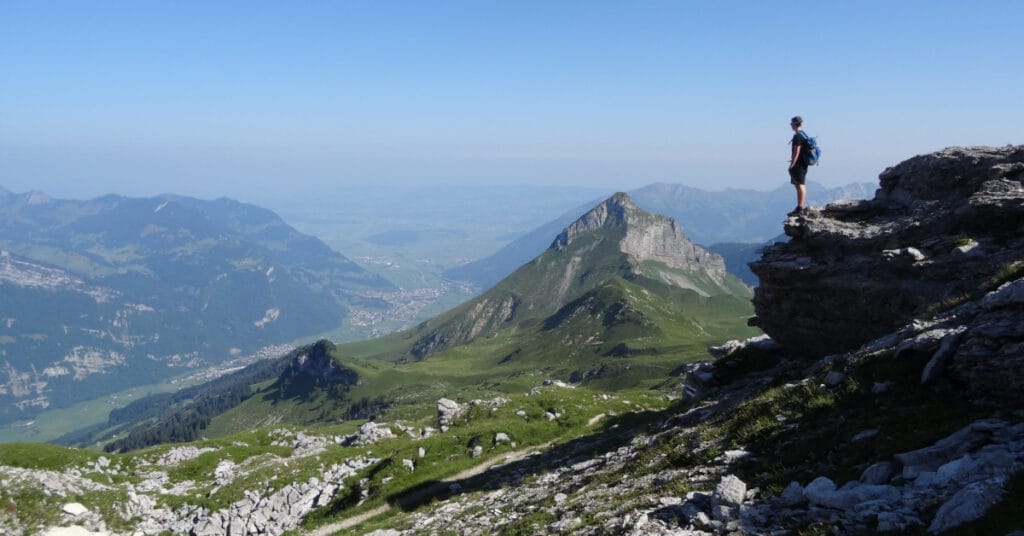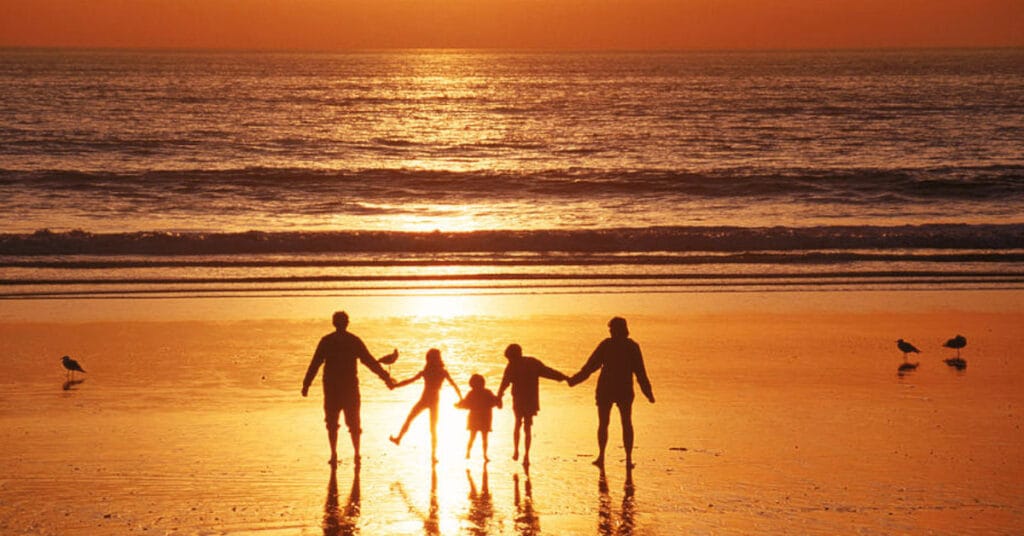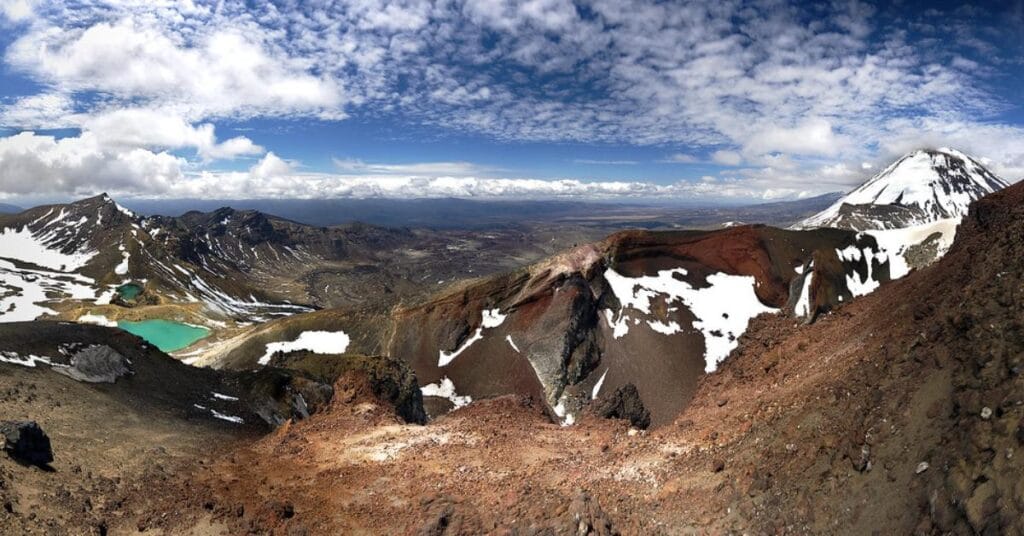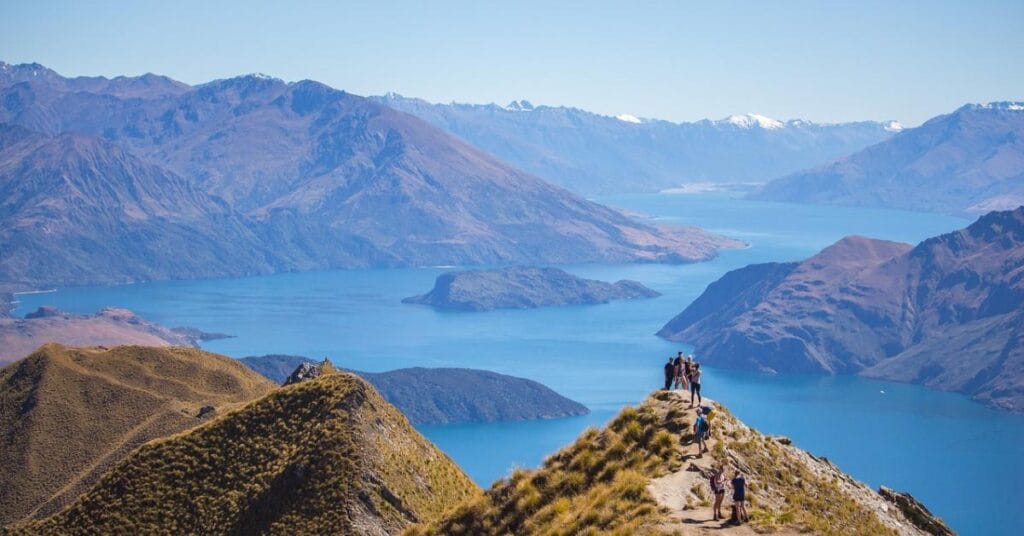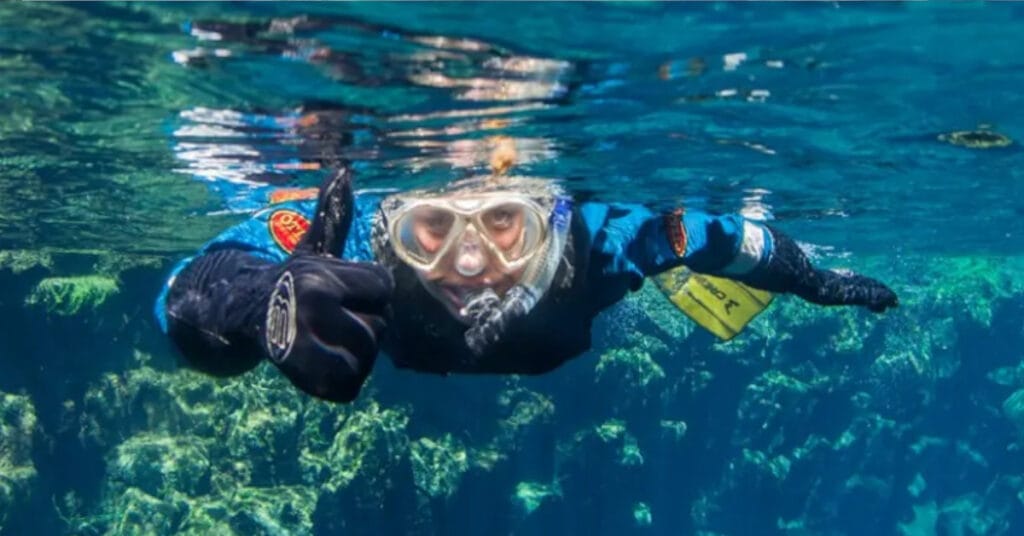
Iceland hiking to waterfalls is one of the most awe-inspiring outdoor adventures you can embark on in the Land of Fire and Ice. Iceland is famous for its rugged landscapes, and its waterfalls are among the most breathtaking in the world. Whether you’re seeking easy hikes or more challenging trails, the combination of dramatic waterfalls, moss-covered rocks, and scenic backdrops will make every trek unforgettable. In this guide, we’ll explore the best hikes to waterfalls in Iceland, what you can expect on these trails, and some practical tips to make the most of your adventure.
Why Hike to Waterfalls in Iceland?
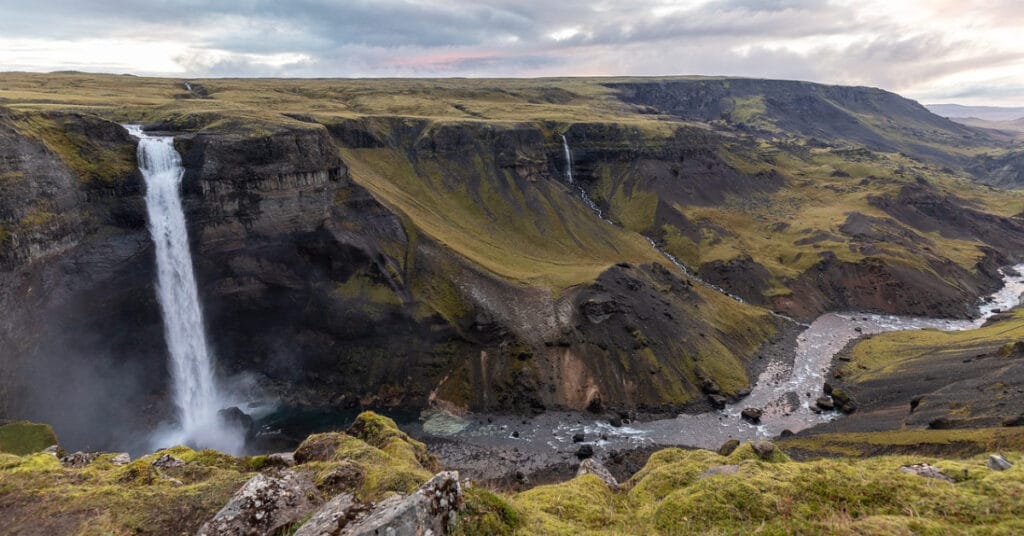
A Paradise for Nature Lovers
Iceland’s waterfalls are not just beautiful—they’re woven into the island’s natural and cultural fabric. From the towering Skógafoss to the hidden gem Glymur, hiking to these waterfalls provides an opportunity to connect with the island’s unique geography. Whether you’re a casual hiker or a seasoned adventurer, Iceland offers something for every skill level. Plus, many of the waterfall hikes in Iceland are accessible and showcase the country’s diverse landscapes, from volcanic rock to lush green valleys.
Best Time for Hiking to Waterfalls in Iceland
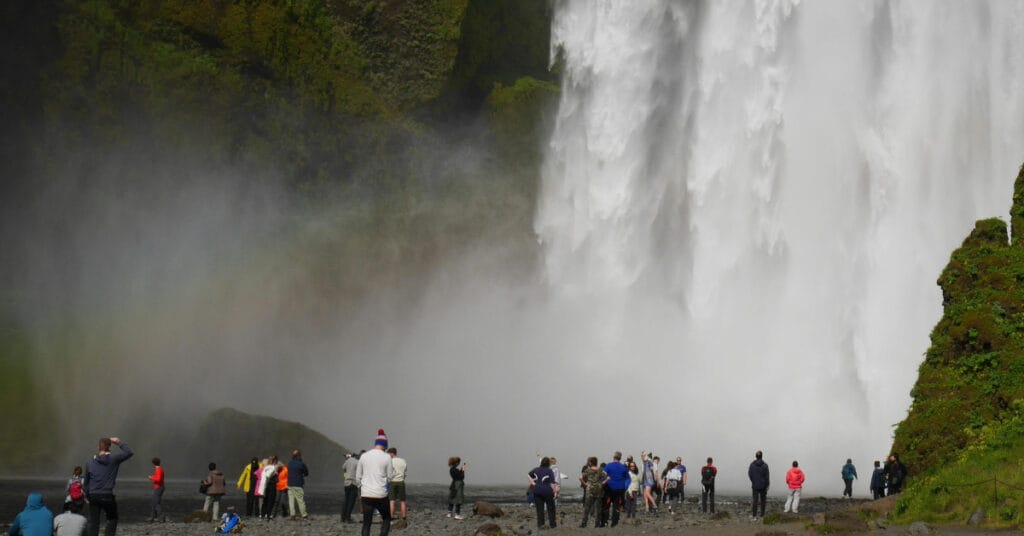
The best time for hiking to waterfalls in Iceland is during the summer months (June to August). This is when the days are long, the trails are dry, and the weather is relatively mild. However, Iceland’s waterfalls are a year-round attraction. Winter hikes to waterfalls can be equally magical but come with the challenge of icy paths and colder conditions.

Top Waterfall Hiking Trails in Iceland
1. Skógafoss Waterfall Hike
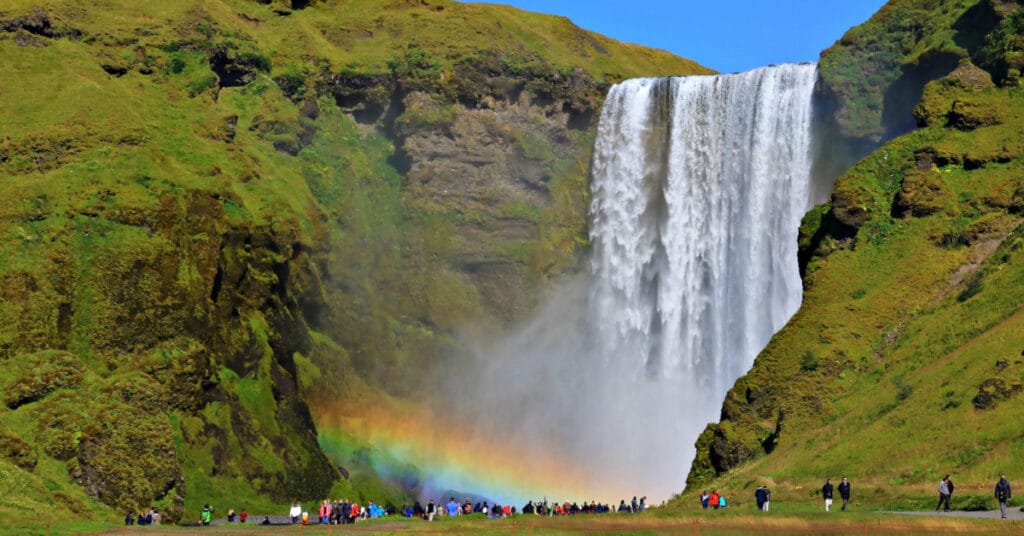
Skógafoss is one of the most iconic waterfalls in Iceland, with a drop of 60 meters (197 feet). While many people simply view the waterfall from the base, the real adventure starts when you hike up the stairs beside it. From the top, the trail continues into the Fimmvörðuháls pass, which connects to the highland nature reserve.
- Trail length: 8 km (round-trip)
- Difficulty: Moderate
- What to Expect: Views of the waterfall from above, expansive mountain landscapes, and more hidden waterfalls along the way.
2. Glymur Waterfall Hike
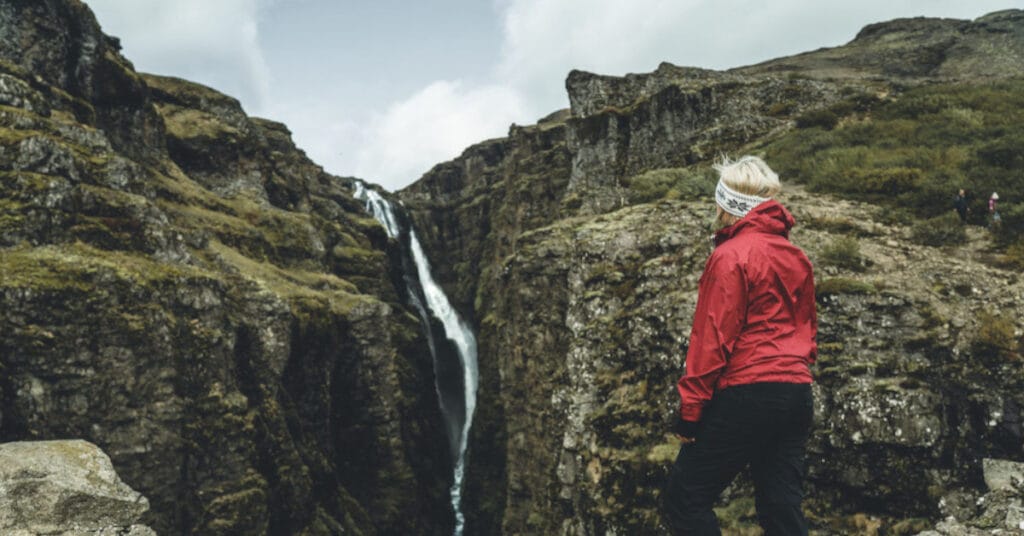
At 198 meters (650 feet), Glymur is Iceland’s second-highest waterfall. The hike to Glymur is a bit more challenging but rewards you with incredible views. You’ll cross rivers, walk through caves, and navigate narrow trails before reaching the dramatic viewpoint.
- Trail length: 7 km (round-trip)
- Difficulty: Moderate to Difficult
- What to Expect: River crossings, a cave path, and panoramic views of the waterfall cascading down a moss-covered cliff.
3. Seljalandsfoss and Gljúfrabúi Waterfalls
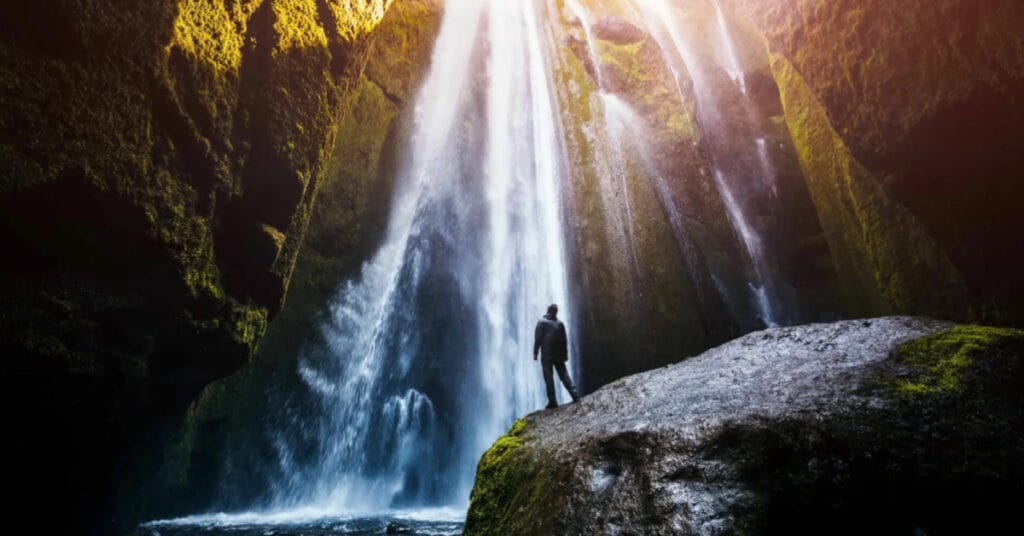
Seljalandsfoss is famous for its unique feature: you can walk behind the waterfall. Located along the Ring Road, this 65-meter (213 feet) waterfall is a must-see. Just a short walk from Seljalandsfoss is the hidden Gljúfrabúi waterfall, tucked away in a narrow canyon.
- Trail length: 1 km (for both waterfalls)
- Difficulty: Easy
- What to Expect: Walking behind the waterfall, getting up close to Gljúfrabúi, and fantastic photo opportunities.
4. Hengifoss Waterfall Hike
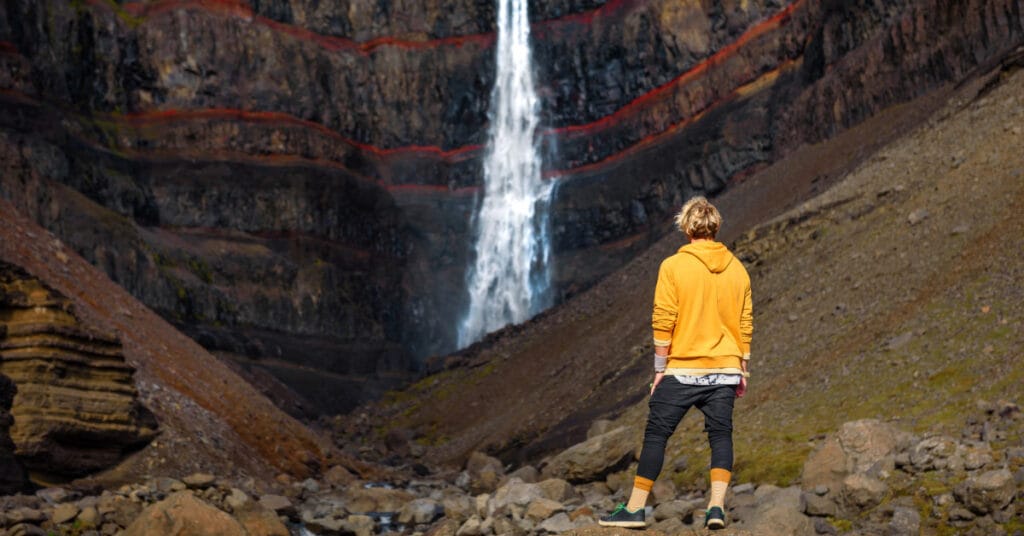
Situated in eastern Iceland, Hengifoss is the third-highest waterfall in the country, cascading 128 meters (420 feet) down into a dramatic gorge. The hike is a steady uphill climb that offers great views of both Hengifoss and the smaller Litlanesfoss along the way.
- Trail length: 5 km (round-trip)
- Difficulty: Moderate
- What to Expect: Stunning basalt columns at Litlanesfoss, red clay and volcanic layers around Hengifoss, and views of the surrounding valleys.
5. Dynjandi Waterfall Hike
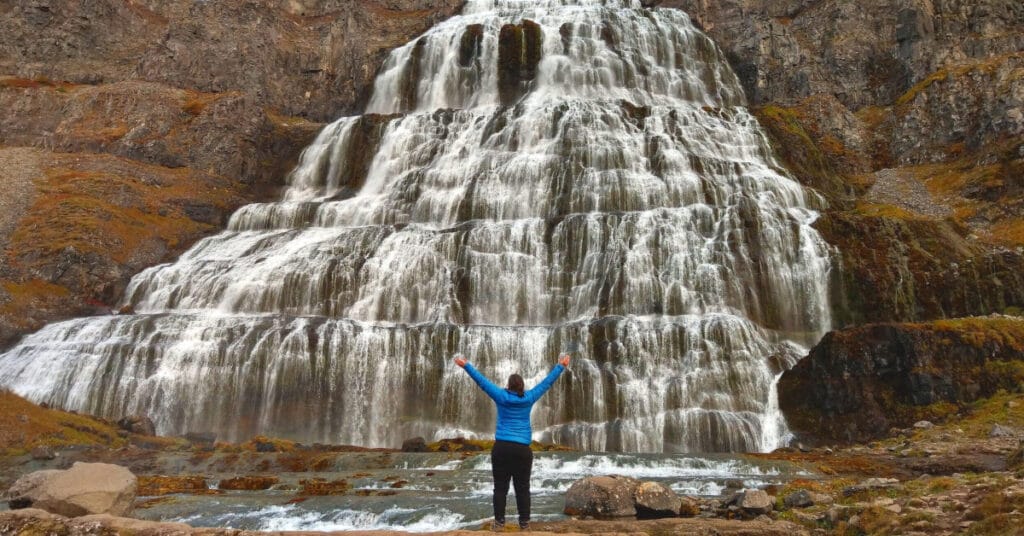
Located in the Westfjords, Dynjandi is one of Iceland’s most unique waterfalls. It resembles a giant bridal veil and consists of multiple tiers. The hike starts at the bottom and takes you up close to each tier of the waterfall, offering incredible views at every turn.
- Trail length: 1.5 km (round-trip)
- Difficulty: Easy to Moderate
- What to Expect: A multi-tiered waterfall, peaceful surroundings, and fewer tourists compared to southern Iceland’s waterfalls.
Practical Tips for Hiking to Waterfalls in Iceland
What to Wear and Bring
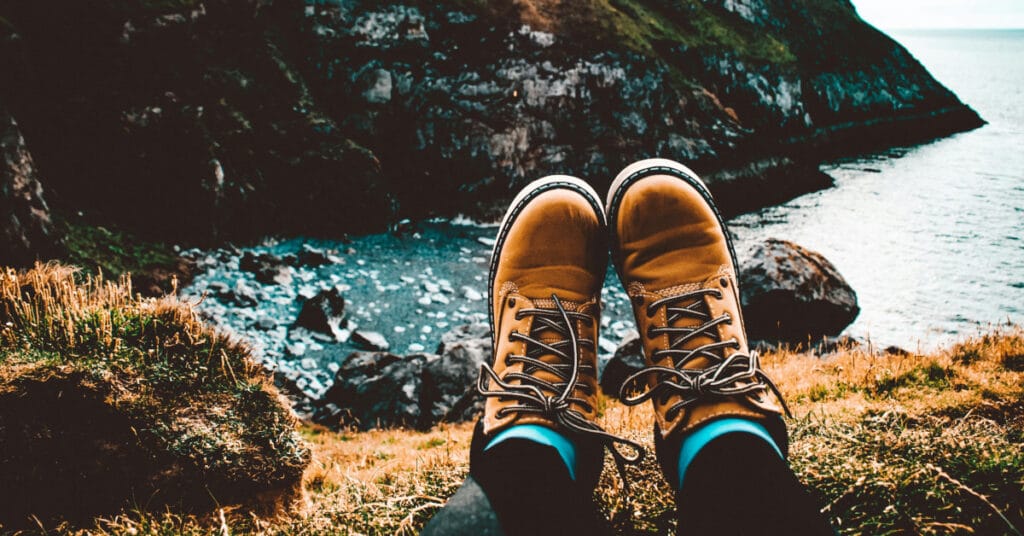
Hiking in Iceland requires some preparation, especially since the weather can be unpredictable. Here’s what you should bring for your Iceland waterfall hikes:
- Waterproof jacket and pants: Even in summer, the weather can change quickly, and you’ll often be hiking near water.
- Sturdy hiking boots: Trails can be rocky, slippery, or muddy, so proper footwear is essential.
- Layered clothing: The temperature can fluctuate, especially at higher elevations or near waterfalls.
- Water and snacks: Some hikes are remote, so it’s important to stay hydrated and energized.
- Camera or smartphone: Iceland’s waterfalls are incredibly photogenic, so be sure to capture the moment!
Safety Considerations
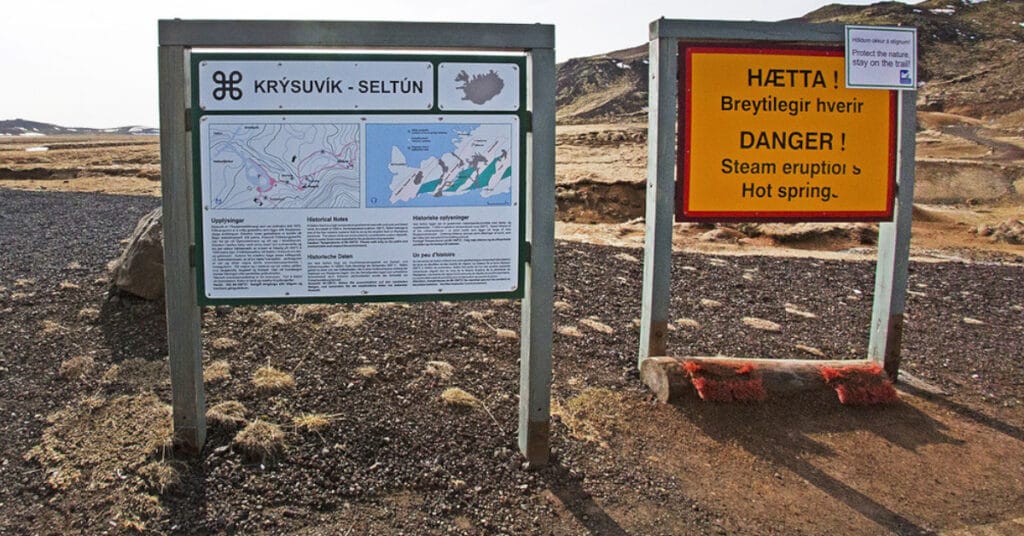
- Check the weather: Always check the weather forecast before heading out, as conditions can change rapidly.
- Stay on marked trails: Many of Iceland’s waterfall hikes are on uneven terrain, so it’s essential to follow the designated paths.
- Avoid getting too close to waterfalls: While it’s tempting to get the perfect photo, the rocks around waterfalls can be slippery, and the currents are often strong.
Best Time for Iceland Waterfall Hikes
Summer (June to August)
The summer months are the best time for hiking to waterfalls in Iceland. The weather is generally milder, and the long daylight hours mean you can hike late into the evening. Many trails, especially in the highlands, are only accessible during this time.
Winter (December to February)
While the trails may be icy and the days shorter, hiking to waterfalls in the winter can be a magical experience. The snow-covered landscapes and frozen sections of waterfalls create a surreal winter wonderland. However, make sure to be extra cautious and consider joining a guided tour for safety.
FAQs About Iceland Waterfall Hikes
Can I hike to waterfalls in Iceland year-round?
Yes, many of the waterfall hikes are accessible year-round, though winter hiking can be more challenging due to icy conditions. Some trails in the highlands, like Fimmvörðuháls, are only open in the summer.
Are the trails to Iceland’s waterfalls well-marked?
Most trails are well-marked, especially at popular sites like Skógafoss and Seljalandsfoss. However, for more remote hikes, like Glymur, it’s a good idea to bring a map or use a GPS device.
Are there guided waterfall hikes available?
Yes, many companies offer guided hikes to waterfalls, which can be especially helpful for more challenging trails or winter hikes when safety is a concern.
Conclusion
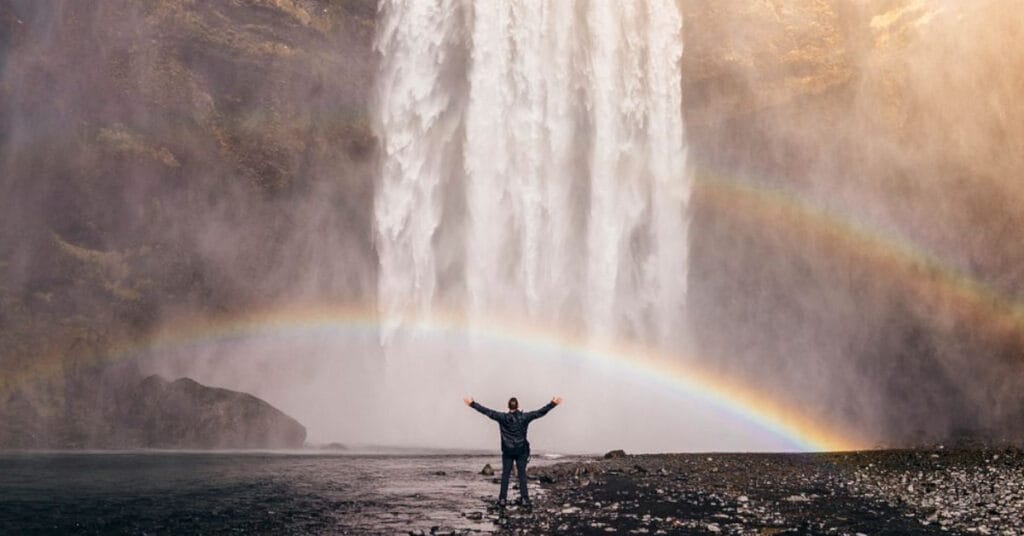
Iceland hiking to waterfalls is a must-do experience for anyone visiting the country. Whether you’re drawn to the towering Skógafoss, the hidden Gljúfrabúi, or the multi-tiered Dynjandi, there’s a waterfall hike for everyone. With diverse landscapes, stunning scenery, and waterfalls around every corner, these hikes are the perfect way to explore Iceland’s natural beauty. Remember to plan ahead, check the weather, and bring your camera to capture these unforgettable views.

